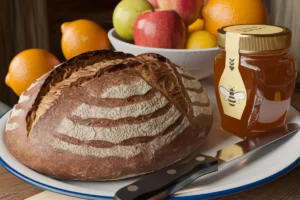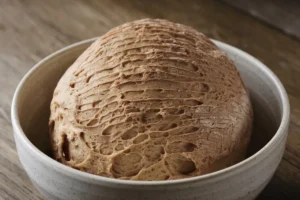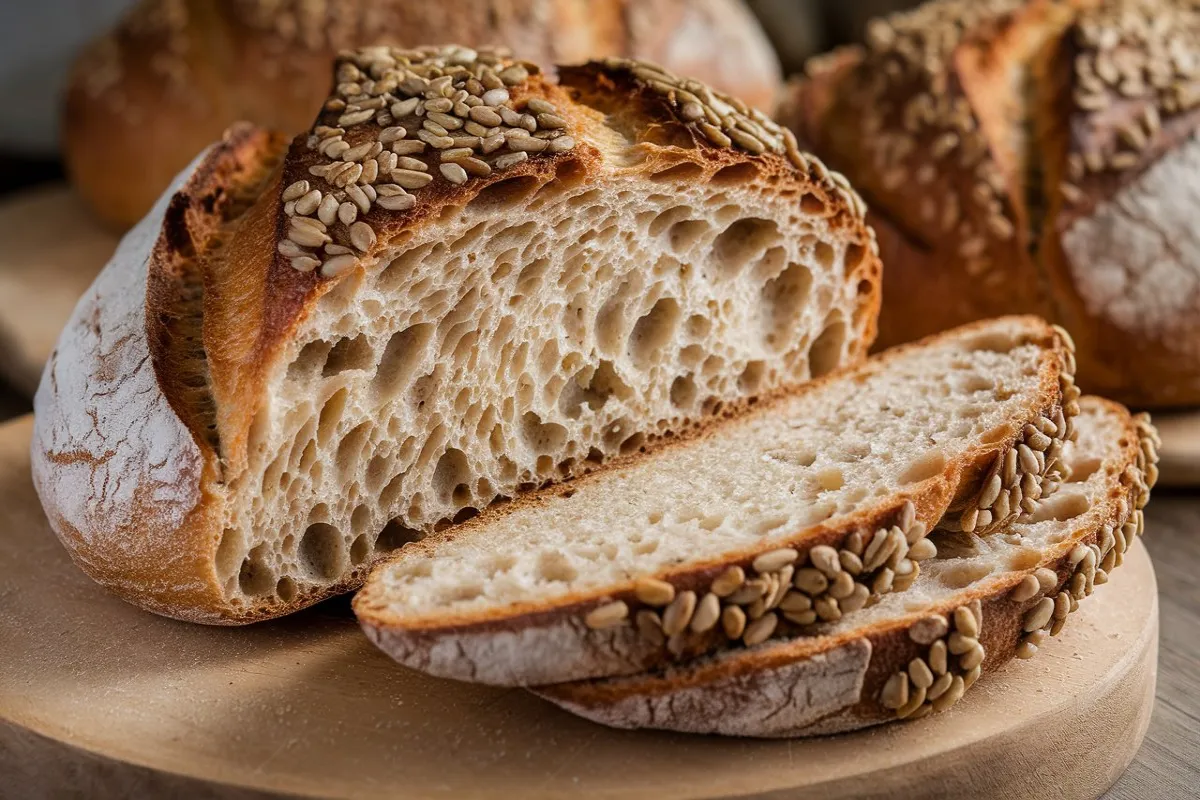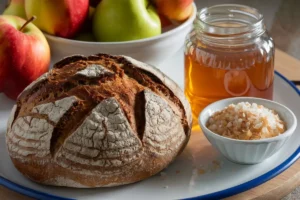What Happens If You Don’t Discard?
Not discarding your sourdough starter is a common mistake among new bakers. If you don’t discard, the starter grows quickly. For example, if you start with 50 grams of flour and water and never discard, by day five, you’ll need over 300 grams of flour per feeding. By day ten, the feeding could require more than 800 grams of flour.
This leads to an unmanageable starter, wasting large amounts of flour. Without discarding, the starter grows uncontrollably and the yeast and bacteria start to lose their balance. This results in weaker leavening power and off flavors in your bread.
Regular discarding is essential for starter maintenance. It helps keep the balance of yeast and bacteria, ensuring your starter remains active and healthy. You also prevent excessive acidity, which can affect the taste of your bread. Learn more about maintaining a healthy starter here.
Moreover, sourdough discard doesn’t have to go to waste. While early-stage discard may be thrown away, once your starter matures, it can be used in recipes. Try using discard in other baked goods, as recommended by this resource.
How Discarding Benefits Your Starter
Is Discarding Wasteful?
Many think that discarding starter is wasteful, but it’s actually less wasteful in the long run. Regular discarding keeps your starter at a good size, reducing the amount of flour needed to feed it.
Reasons why discarding isn’t wasteful:
- Flour efficiency: Feeding a large starter would use too much flour, making it more wasteful.
- Composting: Discard can be composted, reducing waste and helping the environment.
- Creative uses for discard: Instead of tossing it, use the discard in recipes like pancakes, crackers, or muffins.
Discarding also keeps the starter fresh and healthy, leading to better bread. A well-maintained starter produces more consistent results. Plus, once the starter matures, you can use the discard in many delicious ways.
When and How to Discard Your Sourdough Starter
When building a sourdough starter, it’s important to discard some of it every time you feed it. This is usually once or twice a day during the first week. During this early stage, the discard isn’t ready for baking because the microbes are still settling. It may also have a strong smell.
After the first week, the discard stabilizes and can be used in different recipes. You can store it in the fridge for later or use it right away in pancakes, crackers, or other quick recipes.
Best practices for discarding:
- First 5-7 days: Discard the starter after each feed, but avoid using it for recipes.
- After 7 days: Save your discard in the fridge for later use. It can last up to two weeks.
- Feeding frequency: Once the starter is mature, feed it every few days, discarding as needed.
By discarding regularly, you keep your starter healthy, balanced, and ready to bake great bread.
Creative Uses for Sourdough Discard
Instead of throwing away your sourdough discard, turn it into delicious treats. The tangy flavor of discard adds depth to many recipes, making it a great addition to pancakes, muffins, biscuits, and even cakes.
Here are some ideas for using discard:
- Pancakes: The sourdough adds a unique flavor to your breakfast.
- Crackers: Crispy crackers make a great snack and can be flavored with herbs and spices.
- Quick breads: Use discard to bake loaves, biscuits, and rolls.
Repurposing your discard reduces waste and adds variety to your meals. Many recipes are available to help you make the most of your discard.
Mature Sourdough Starter and Evolving Discard Methods

As your sourdough starter matures, the discarding process changes. During the first two to three weeks, discarding is vital to balance the microbes. However, once the starter stabilizes, discarding becomes more efficient.
Discarding in mature starters:
- Baking replaces discarding: When making sourdough bread, you’re using the discard in the dough. This means you don’t have to throw away the starter.
- Smaller feedings: A mature starter needs less food. You can keep a smaller amount and feed it less often.
With a mature starter, the need for discarding decreases. Baking with the starter becomes the discard process itself, minimizing waste.
Environmental Impact and Sustainability of Sourdough Discard
FAQs About Sourdough Discard
1. What is sourdough discard?
- Sourdough discard is the portion of the sourdough starter that is removed before feeding the remaining starter with fresh flour and water. This process helps maintain the proper acidity and activity levels in the starter.
2. Why do I need to discard part of my sourdough starter?
- Regularly discarding a portion of the starter prevents it from growing too large and becoming unmanageable. It also helps maintain the right balance of yeast and bacteria, ensuring a healthy and active starter.
3. Can I use sourdough discard instead of throwing it away?
- Yes, sourdough discard can be used in a variety of recipes, such as pancakes, waffles, muffins, crackers, and even pizza dough. It adds a tangy flavor to these dishes and helps reduce food waste.
4. How long can I keep sourdough discard?
- Sourdough discard can be stored in the refrigerator for up to a week. For longer storage, you can freeze it in an airtight container for several months.
5. Does sourdough discard need to be fed?
- No, sourdough discard does not need to be fed as it’s not meant to be kept active. It can be used directly in recipes without any additional feeding.
6. Is sourdough discard safe to eat?
- Yes, sourdough discard is safe to eat. It is simply a mixture of flour and water with some natural yeast and bacteria, similar to the starter itself, but with less yeast activity.
7. What is the difference between fresh and mature discard?
- Fresh discard is taken from a recently fed starter, and it’s often less tangy and has a milder flavor. Mature discard comes from a starter that hasn’t been fed for a while and has a more pronounced tangy flavor, which can add depth to recipes.
8. Can I use sourdough discard in bread recipes?
- While sourdough discard can be used in bread recipes, it will not leaven the dough effectively on its own due to its lower yeast content. However, it can add flavor when combined with commercial yeast or a well-fed starter.
9. How do I know if my sourdough discard has gone bad?
- Sourdough discard may go bad if it develops an off smell, such as a strong, unpleasant odor that differs from the usual tangy or vinegary scent. Mold growth or a change in color also indicates that it should be discarded.
10. Can sourdough discard be used for non-baking purposes?
- Yes, sourdough discard can be used in a variety of ways beyond baking. It can be used to thicken soups and stews, as a base for battering vegetables or meats, or even added to compost as a natural food waste.
11. Why does my sourdough discard smell like alcohol?
- A smell of alcohol in sourdough discard indicates that the yeast has produced ethanol as a byproduct of fermentation. This is normal, especially in older discard. The alcohol will typically evaporate during cooking or baking.
12. Can I share my sourdough discard with others?
- Yes, you can share sourdough discard with friends or family who might be interested in using it for recipes. Just make sure to store it properly if it will be transported.
13. How can I reduce the amount of sourdough discard?
- To reduce the amount of sourdough discard, you can maintain a smaller starter, feed it less frequently, or use more of the discard in cooking and baking recipes. Alternatively, you can also dry the discard and store it for later use.
This FAQ should provide a comprehensive overview of common questions regarding sourdough discard. Let me know if you need any additional information!

Conclusion
Regularly discarding your sourdough starter is key to keeping it healthy, balanced, and ready to bake great bread. By discarding, you refresh the starter and ensure it remains active. Discarding also helps prevent waste and keeps your bread tasting its best. Plus, repurposing your sourdough discard in creative recipes makes the process even more rewarding.
With thoughtful management, discarding doesn’t have to be wasteful. Instead, it can be an important part of your sourdough journey, leading to better bread and less waste.
Discarding your sourdough starter is a vital part of maintaining a strong and healthy baking process. Though it may seem counterintuitive, regularly discarding ensures that your starter remains active, balanced, and ready to produce delicious, well-leavened bread. By incorporating sustainable practices like composting, sharing, and using sourdough discard in recipes, you can minimize waste and make the most of your baking efforts. Embrace discarding as an essential step in your sourdough journey, and enjoy the rich flavors and rewarding results it brings.


